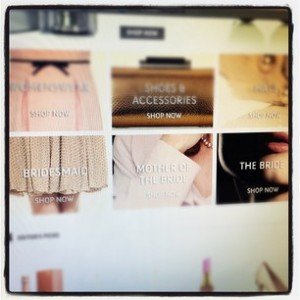As a brand, you have to embrace the idea that you’re not the only company targeting the exact same audience. If you’re humble enough to do that, you’ll uncover marketing opportunities that you’d otherwise miss.
Think about a wedding
Luxury Daily columnist Tricia Carr recently wrote an article about Harrods, Four Seasons Hotels, and Estee Lauder all embarking on email and online campaigns targeted at the wedding audience: bride, groom, wedding parties, gift givers, etc.
The moment a couple announces their engagement they’re barraged with advertising and marketing messages trying to capture their share of the $40 billion annual wedding market.
But Harrods, Four Seasons and Estee Lauder all target the very same luxury-oriented niche within the “I’m getting married” market. Maybe they should pool their resources?
The wedding cycle
When couples get engaged, a very predictable timeline is set in motion. Friends and family are told. Reception site and date are set. Wedding party is established. Gown is chosen. Reception details like photographer, flowers, band are established. This goes on and on. You get the picture. It is a predictable and very streamlined consumer cycle.
Think like allies, not competitors
Harrods, Four Seasons, and Estee Lauder each want to own one portion of the wedding cycle.
Four Seasons wants to be considered to host an event or as a honeymoon destination.
Harrods wants to own the registry and gift ideas for friends and family.
Estee Lauder wants the bride to look the best version of herself on the day of special events.
These brands do not compete for the same share of dollars; they complement each other and help propel the bride towards her wedding day through to the honeymoon.
When brands start thinking about every activity and purchase across the wedding cycle, even these three brands would realize there are other companies they could partner with to align their messaging: Vera Wang, Stuart Weitzman, and Tiffany’s are just a few.
If a bride wants and can afford a luxury wedding, every single one of these brands is in her list anyway. As these brands are servicing the niche luxury bridal market, why not align as partners? The brands are already in the mind of the consumer.
Ask Yourself
What do your clients and customers purchase right before they start thinking about the products you sell? What do they purchase right after? In other words, what is the consumer cycle around your products? What do you want to own and where can alliances be made?
You need to ask yourself what brand has already acquired your customer? That brand is your partner. They have already built a trusted relationship with your audience. What can you do to align in a deeper way?
What if
What if Harrods, Estee Lauder and Four Seasons created content together and shared their audience?
